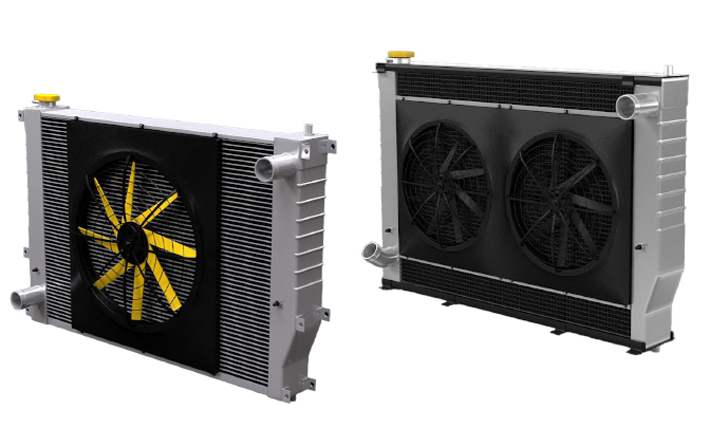Automotive Radiator Fans: Single vs. Dual & Pull vs. Push – The Definitive Selection Guide
2025-07-18
Automotive radiator fans are the critical defense line of your engine's cooling system, providing essential airflow during low-speed driving or idling. The choice between single and dual fans impacts cooling efficiency, while airflow direction (pull vs. push) directly affects system reliability. This guide explains the professional selection logic in clear terms.

I. Single vs. Dual Fans: Core Differences
Single Fan System
Key Advantages: Simple, compact structure; lower cost; ideal for space-constrained engine bays.
Critical Limitations: Cooling capacity has a hard ceiling; extremely high single-point failure risk (fan failure = cooling collapse).
Ideal Applications: Naturally aspirated engines below 1.6L, urban commuter vehicles, OEM single-fan designs.
Dual Fan System
Key Advantages:
1. ≥40% higher cooling capacity (synergistic airflow pressure stacking).
2. Built-in redundancy (maintains baseline cooling if one fan fails).
3. Superior temperature stability under high thermal loads (e.g., turbocharged engines).
Trade-offs: 30-50% cost increase, ≈15% higher power draw, requires more installation space.
Essential For: Turbocharged engines above 2.0L, vehicles operating in extreme heat, towing/heavy-load applications.
Industry Validation: Ford EcoBoost 2.3T testing shows dual fans reduce coolant temps by 7-10°C vs. single fans during traffic jams with AC at max load.
II. Pull vs. Push Configuration: The Airflow Direction Decision
Pull Configuration (Fan Behind Radiator)
Operation: Draws cool air from the grille through radiator fins; exhausts heat into the engine bay.
Industry Standard (95% of OEM Designs):
1. Maximizes synergy with ram air (at 60km/h, cooling efficiency increases by 65%).
2. Fan protected by radiator from road debris.
Only Drawback: Radiator front face requires periodic cleaning.
Push Configuration (Fan In Front of Radiator)
Critical Flaws:
1. Fights ram airflow: Efficiency plummets 37% at 80km/h (SAE testing).
2. Exposed fan blades vulnerable to impact damage.
3. Occupies critical front-end space; compromises wiring/component layout.
Summary
The golden rule for automotive radiator fans is: Choose single fans for cost efficiency; dual fans are mandatory for high thermal loads. Pull configuration is non-negotiable; push setups must be avoided at all costs. Any upgrade must strictly align with the engine’s cooling demands and the engine bay’s physical boundaries.